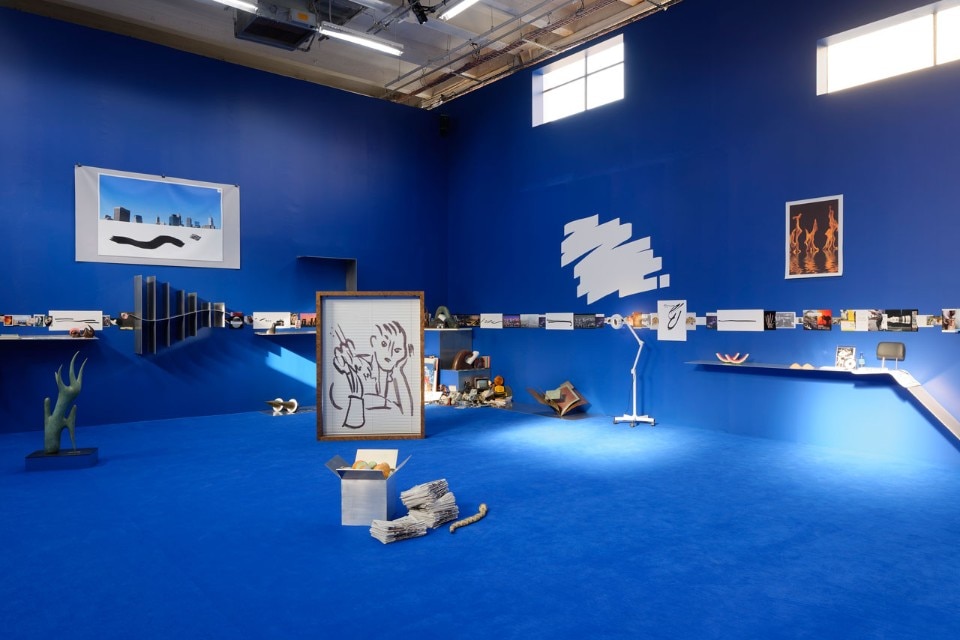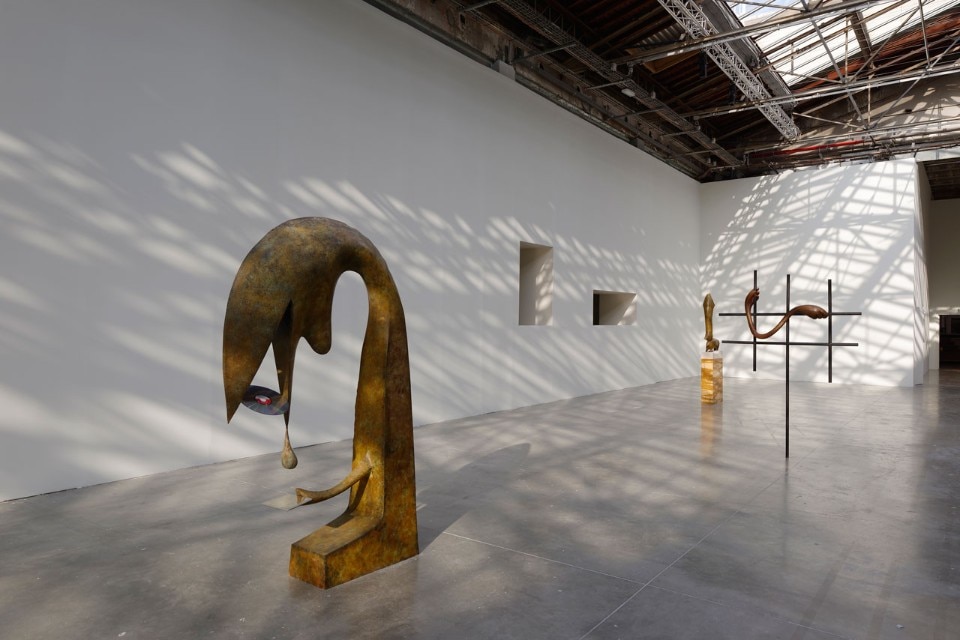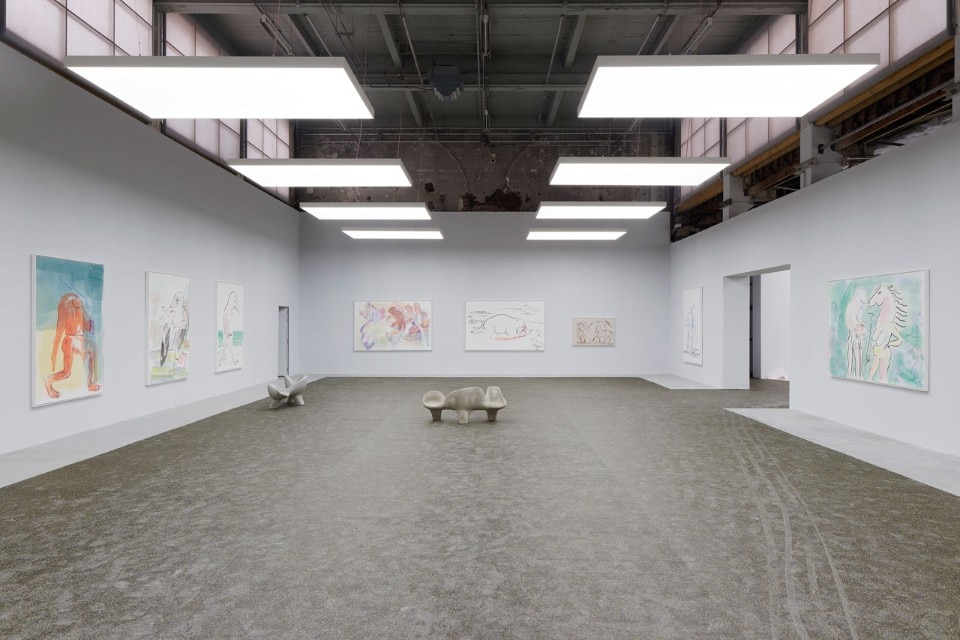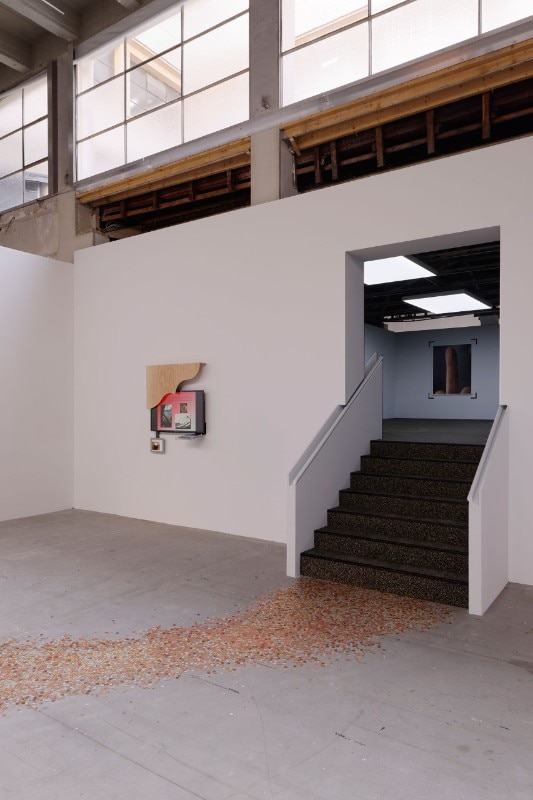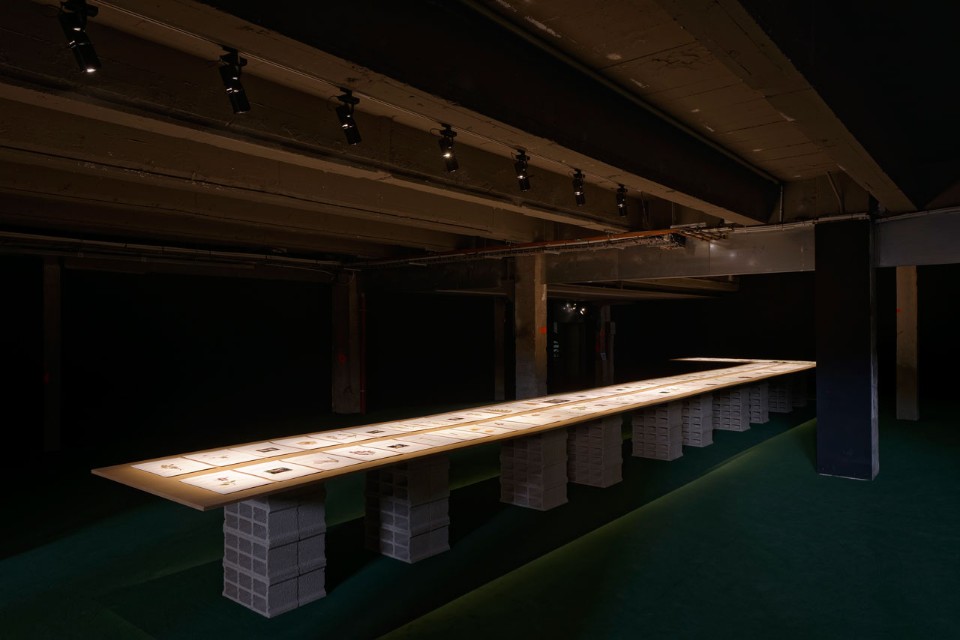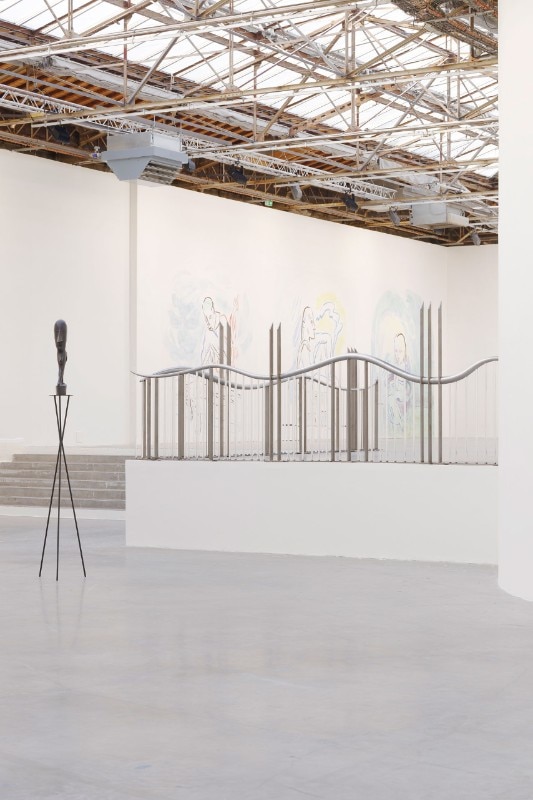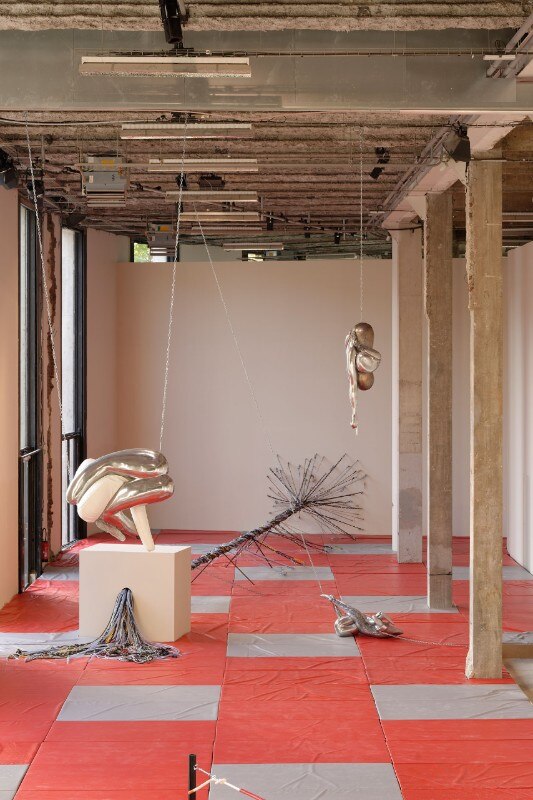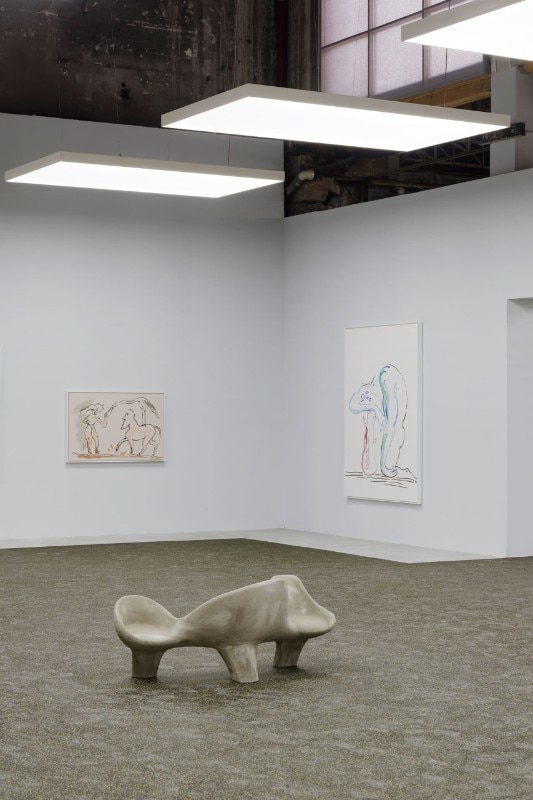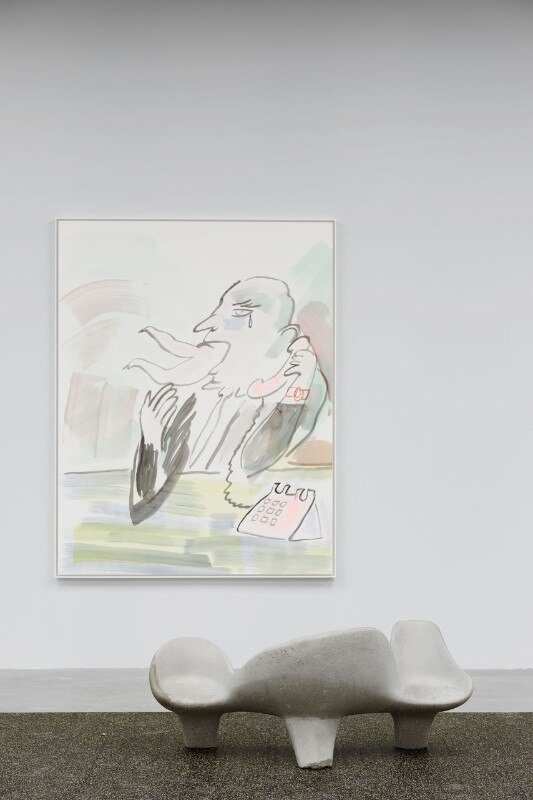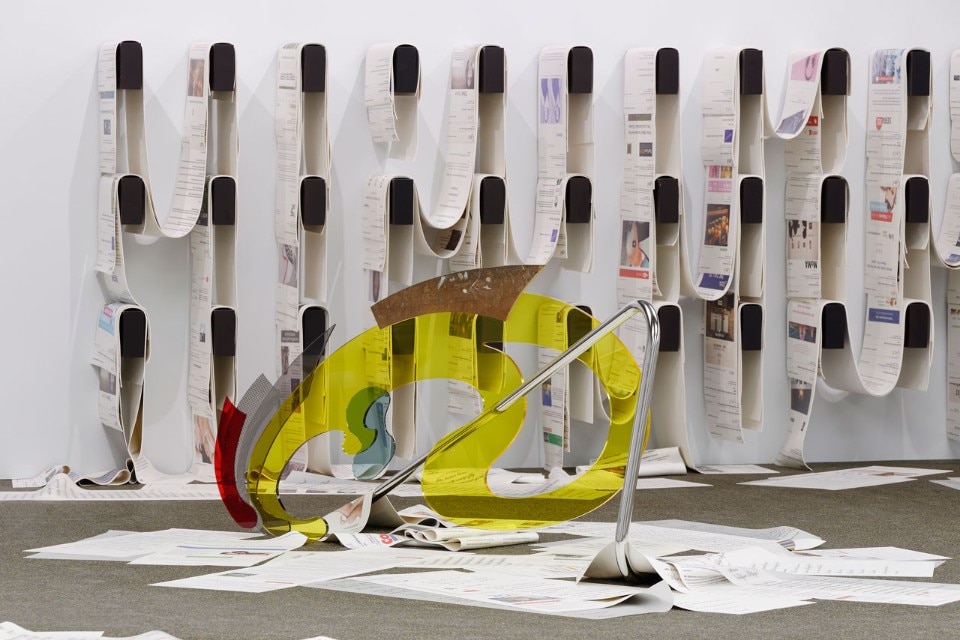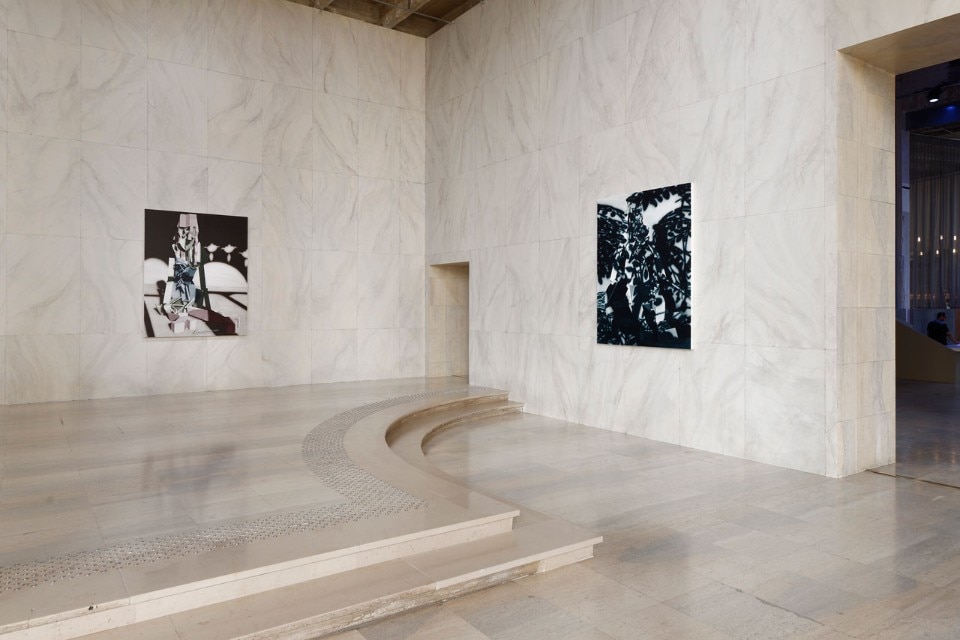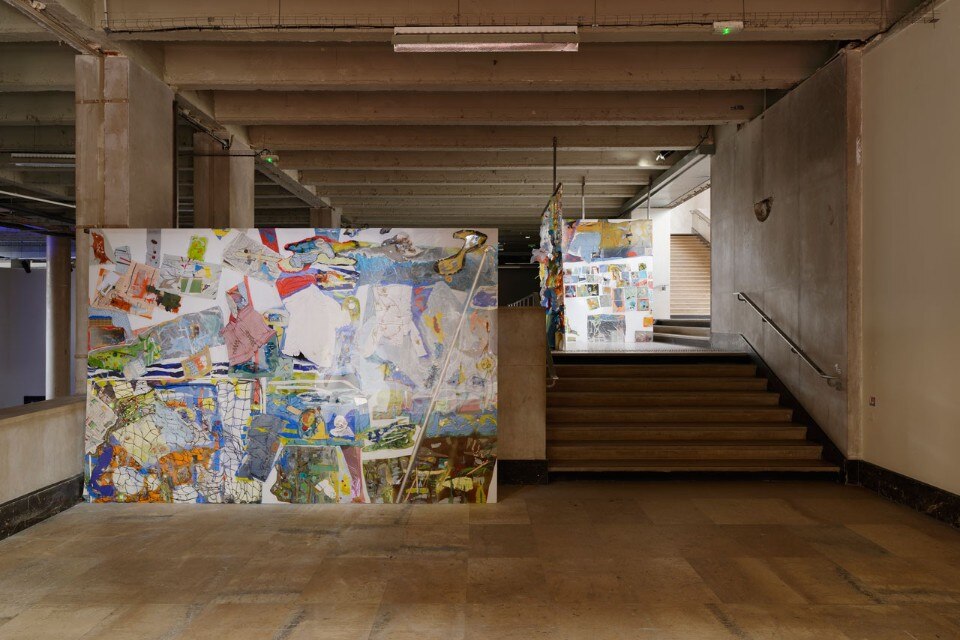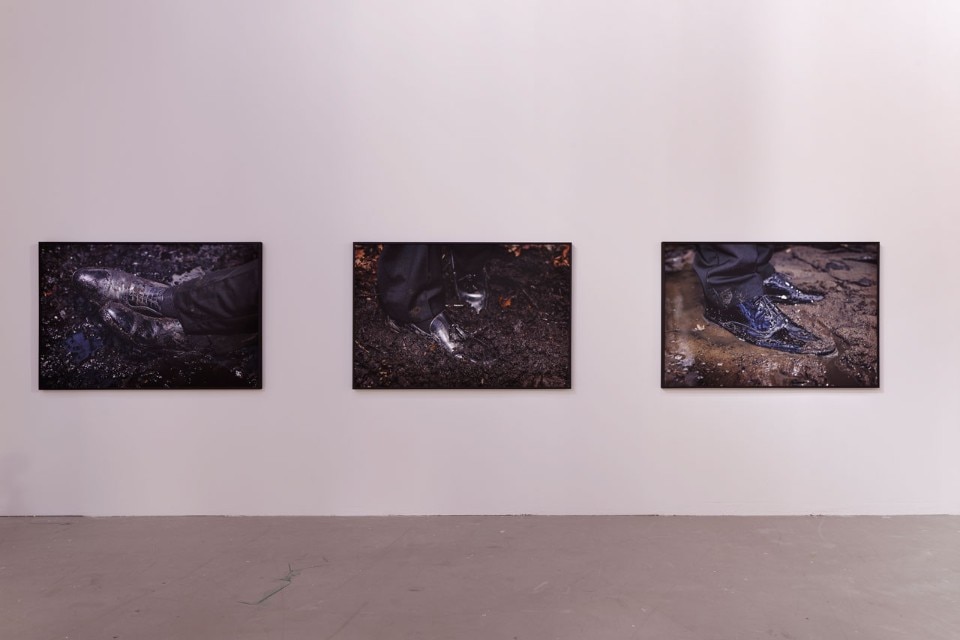The imposing exhibition of Camille Henrot's work at the Palais de Tokyo is as prompt and precise as the articulation of time hinted at in the title. (“Days are Dogs” refers to the dog days of summer.) Henrot turns to the completely fictitious invention of the time span termed a 'week', composed of seven days, each with its own mythological and astronomical origin. With one room and one section of work devoted to each weekday, the seven rooms/days follow one on the other in perfect synchronicity; they give cadence to the whole exhibition and inspire thought about something more than just a narrative contrivance.
At the entrance to the Palais, the public is greeted by a marbled trompe-l’œil drawing, a tone reworked by the artist to achieve an intentional architectural face lift. Nonetheless it's difficult to call the work site-specific. The museum space, to which her works seem strictly tied in this instance, does away with many of the building's specific features while providing a new sense of light in Cécile Degos' sophisticated design. Camille Henrot has clung to the place, attempting a sort of perverse overall appearance whereby every artwork seems engaged in artificial and exponential growth.
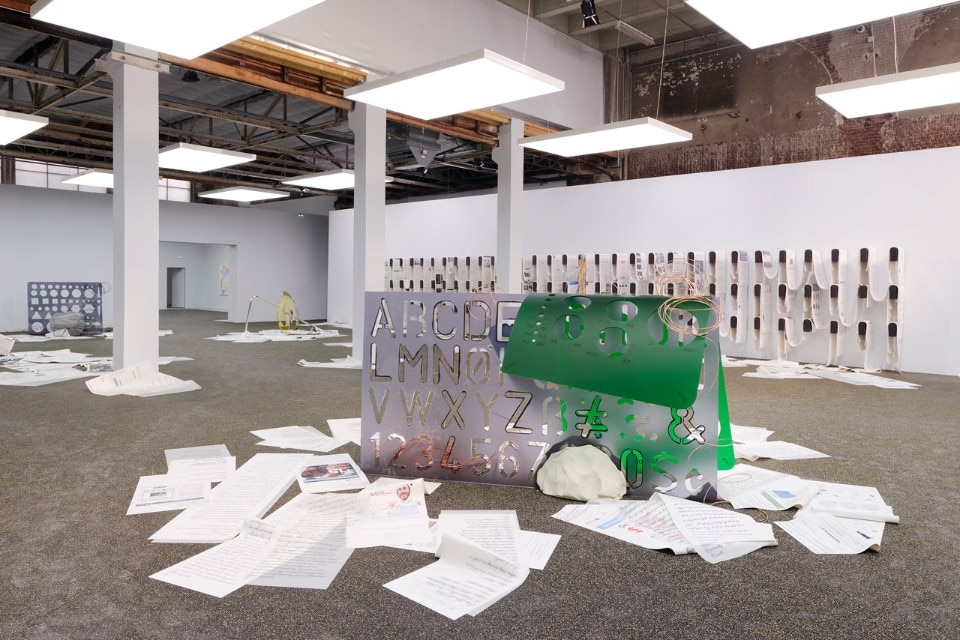
This carte blanche conferred on the thirty-nine year old French artist is just the most recent of a series of invitations that Jean de Loisy, president of the Palais de Tokyo, has extended to renowned artists. The list of participants reveals a programme of extremely wide-ranging contacts and collaborations across the international art scene as well as a taste for experimentation. De Loisy's winning model widens the usual retrospective's range of action and past editions are truly memorable for the shows put together by Jeremy Deller, Philippe Parreno, Ugo Rondinone and Tino Sehgal; none of the exhibitions were flawless but their intentions were certainly better defined.
In Camille Henrot's case what is immediately apparent is the dramatic form of her almost umbilical relationship to the space: her artistic career began here, thus acquiring visibility and market interest; in this same place Henrot has decided to celebrate herself.
Indeed her first solo exhibition was held here in 2005, in one of the slots that the Palais devoted to emerging artists. Then, in 2013, Camille Henrot won the Golden Lion Award at the Venice Biennale for her film Grosse Fatigue, allowing her to distil and adjust a goodly number of works in smaller spaces. Within the vast scale of this venue, however, her artistic investigation is hard-pressed to reiterate itself and it risks becoming unpalatable. The artists she has invited seem to function only an excuse, with the exception of Maria Loboda, who enriches the show with a splendid series of photographs titled Young Satyr Turning to Look at his Tail, or Nancy Lupo, who doesn't allow the emotional and latent power of her sculptures to be seen and written off as mere benches in a room of large-scale watercolours by Camille Henrot.
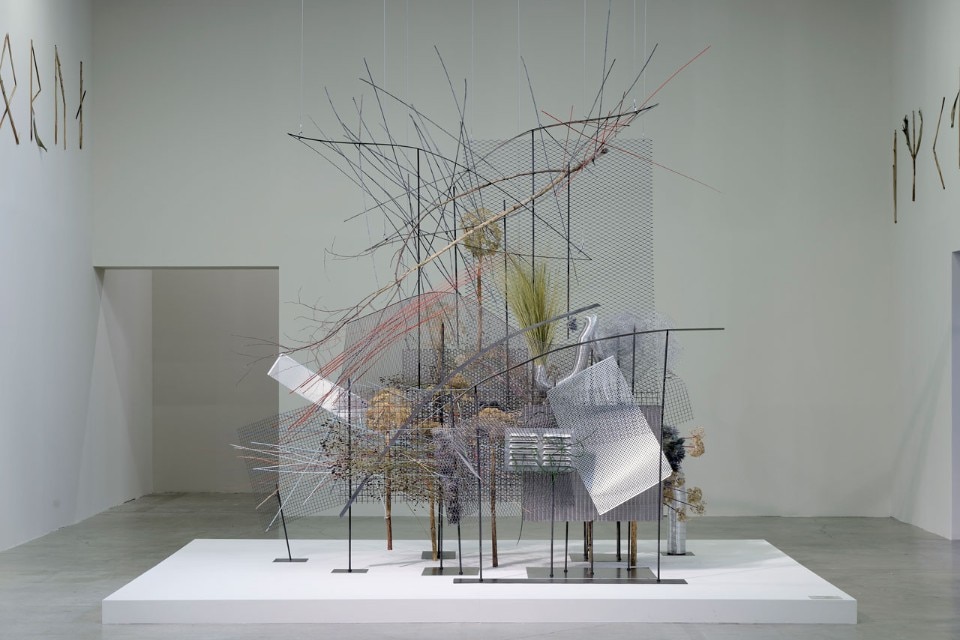
And again it was precisely at the Palais de Tokyo, in the context of the 2012 Paris Triennial, that Camille Henrot's sophisticated vocabulary was particularly praised by critics in a difficult and dispersive show curated by Okwui Enwezor. That exhibition opened with the conceptual space of her Ikebana titled Is it Possible to be a Revolutionary and to Love Flowers?, earning her the label of romantic-conceptual artist. Today the same rooms host the flower arrangements that are weakened and lacking the urgency that led to their creation. When the artist moved to New York, she had to satisfy, and not only conceptually, the wish to recover her library of French language books. When she invented this play of correlation between flowers and narrative it had all the freshness of an early-career work. Now that her work has been definitively stratified, it seems to be greenhouse-grown. In this space that appears semi-private rather than a Parisian public institution, the winter garden's glass panes, ceilings and lights are of no assistance. Driven by habit Camille Henrot reintroduces old installations.
With several years’ hindsight, even The Pale Fox, first seen at the 2014 Salon Béton, seems like a decidedly dangerous narcissistic exercise. This leads well-prepared viewers, who visit exhibitions and consume contemporary art even on blogs and social media, to inevitably share the judgement voiced by many critics based in Paris. The number of known installations and already-seen films is more in keeping with a retrospective than a carte blanche curatorial effort.
Page after page, the weekly date book becomes a sad collection of notes, where one can write down the number of known artworks, their original production, and their successive reuse. New individual installations include the large gym created along the show's itinerary; it sums up the martial features of Tuesday (mardi in French, is derived from Mars, the god of war) and shortens the long itinerary through the immense spaces of the Palais de Tokyo. A large room of bronze works produces a spectral effect, an almost funereal parody of the Musée d’Orsay with its parterre and balustrade. It is a shambles in the way it historicises itself and it winds up erasing all the high principles of organization that led us to love Camille Henrot.
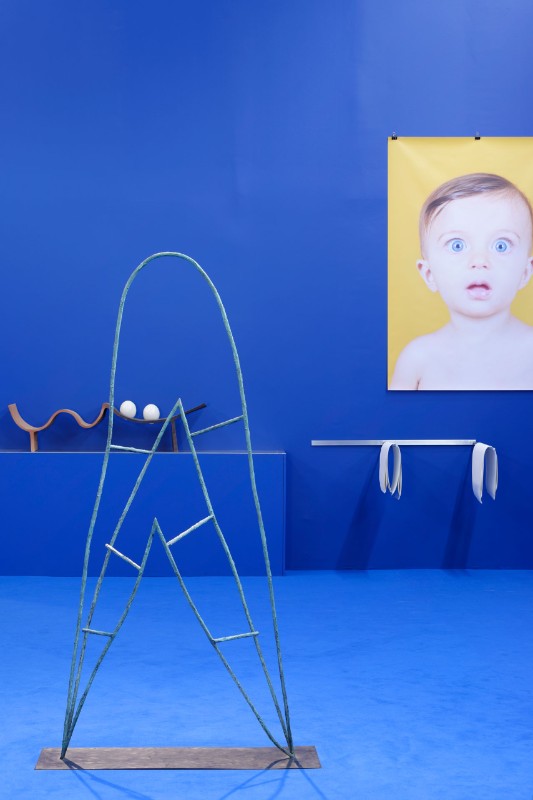
Here the cocktail of anthropology and maniacal passion for archives of all kinds has disappeared along with the genealogies of art that had crowned Henrot as one of the most original artists of recent years; it is the surrealist nonsense of the few new works that dominates this exhibition. If, in The Pale Fox, the cosmogony of the Dogon people superintended and coincided with the organization of our current computer age, here the choice of narrative governing a “celibatory” show only brings together a multimedia collage. Detrimental to the delicate human work of dominating and representing time in its everyday commonplace nature, even the strategy of date books with weekly pages fails.
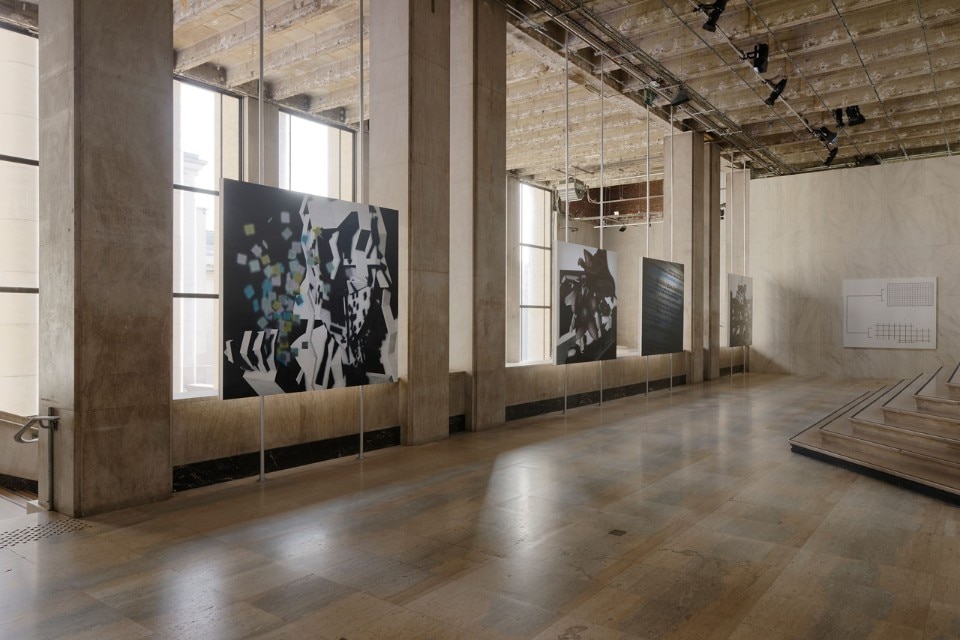
Camille Henrot appears to be reorganising a desk on which she has lined up the recruiting papers of the artists she invited to make an interim artwork. Samara Scott's collage works do not allow the visitor to leave the itinerary while Jacob Bromberg's splendid poem tries to provide scale to this cyclopean, and decidedly one-eyed, project. David Horwitz’s depressive desire is the virtual obsession best realised by the artist-curator. As a perfect connoisseur of places and in her role as the hostess of the house, all the French artist has to do is to use her undoubted ability to manage what she has always known how to do: to put together sublime floral decorations and organise sittings for home cinema. Her films Deep Inside and Grosse Fatigue are entries in the recent history of art films. Her invitation to cure the self in the enormous gym on the ground floor does not, however, inspire any war-like terror. We would have preferred to see her develop the love for thoroughbreds or the passion for the diamonds belonging to Aga Khan’s wife ready for sale at auction. The match of these elements to a very beautiful herbarium is a magnificent artwork. The mega production is, however, the reprint of Max Ernst’s A Week of Kindness, which might have been a more efficient date book seeing that the same iconography had already been summarised there as early as 1934.
© all rights reserved
- Exhibition title:
- Days are Dogs. Carte Blanche to Camille Henrot
- Opening dates:
- 18 October 2017 – 7 January 2018
- Curator:
- Daria de Beauvais
- Exhibition venue:
- Palais de Tokyo
- Address:
- 13, avenue du Président Wilson, Paris


